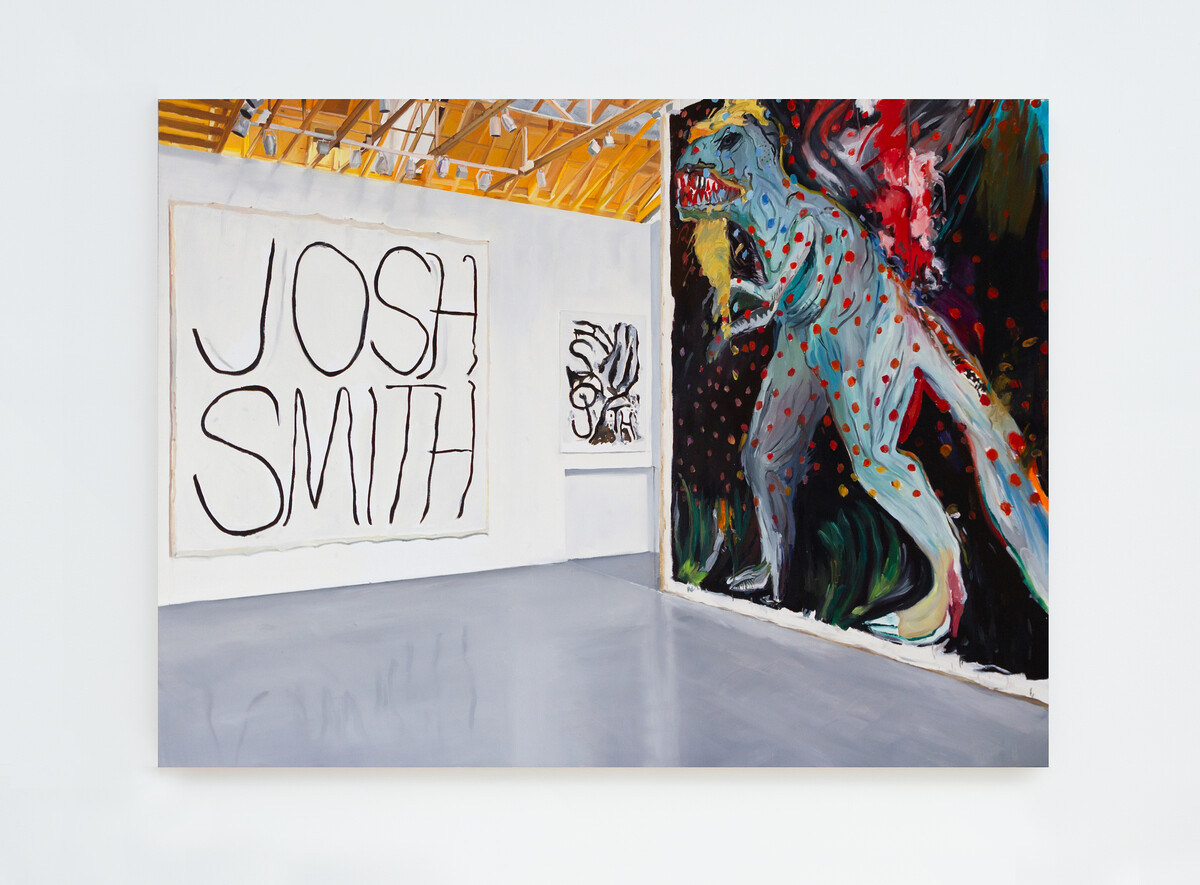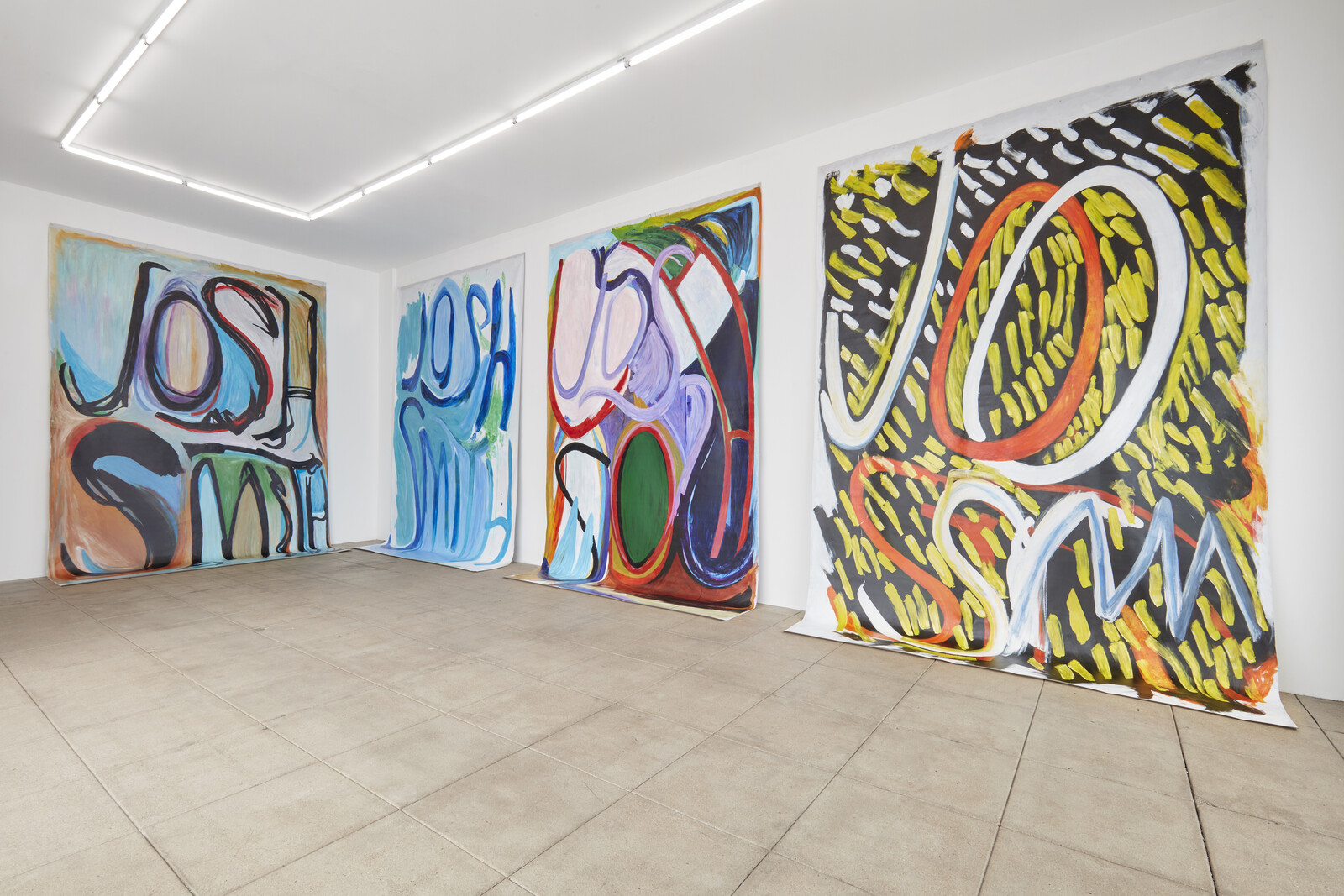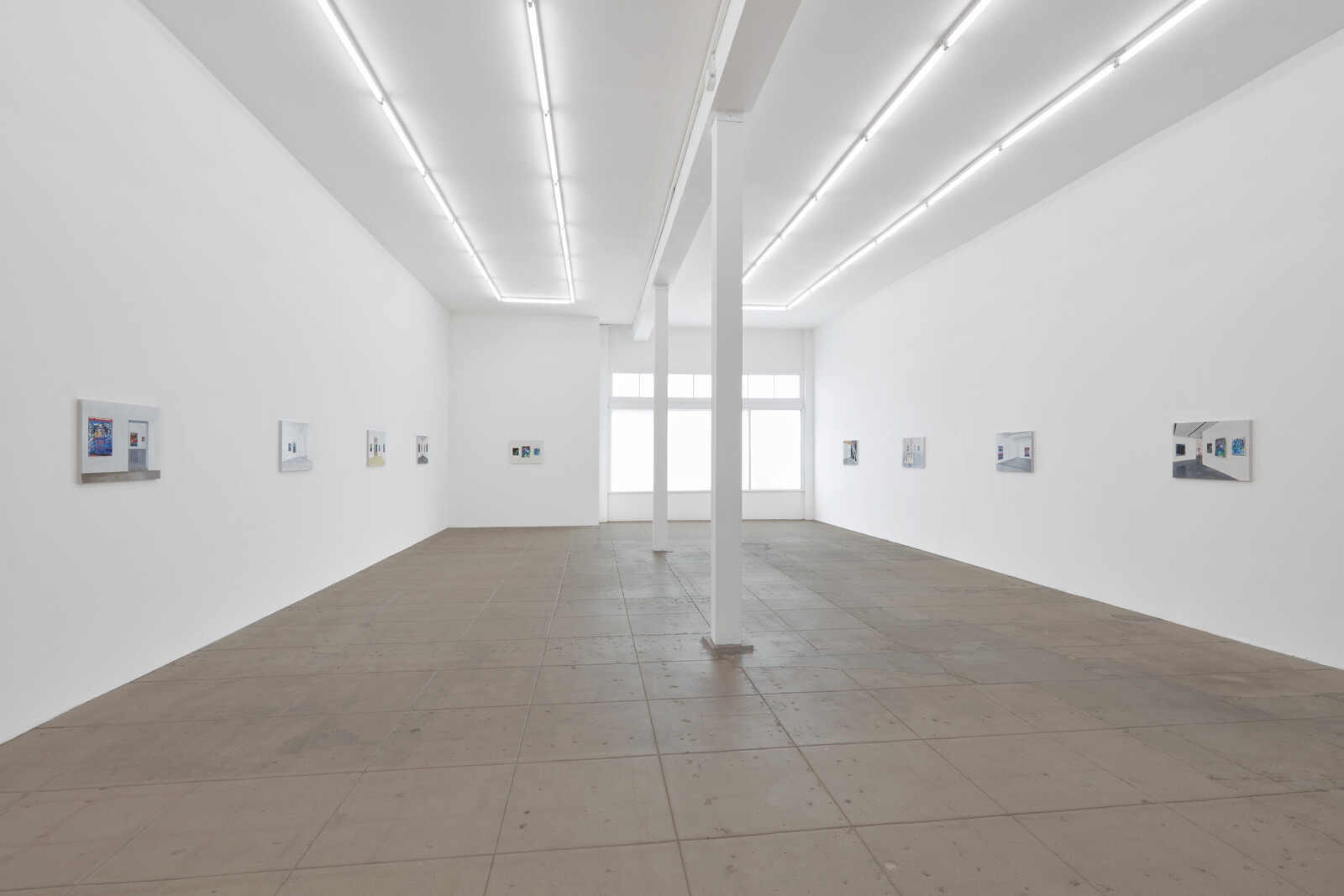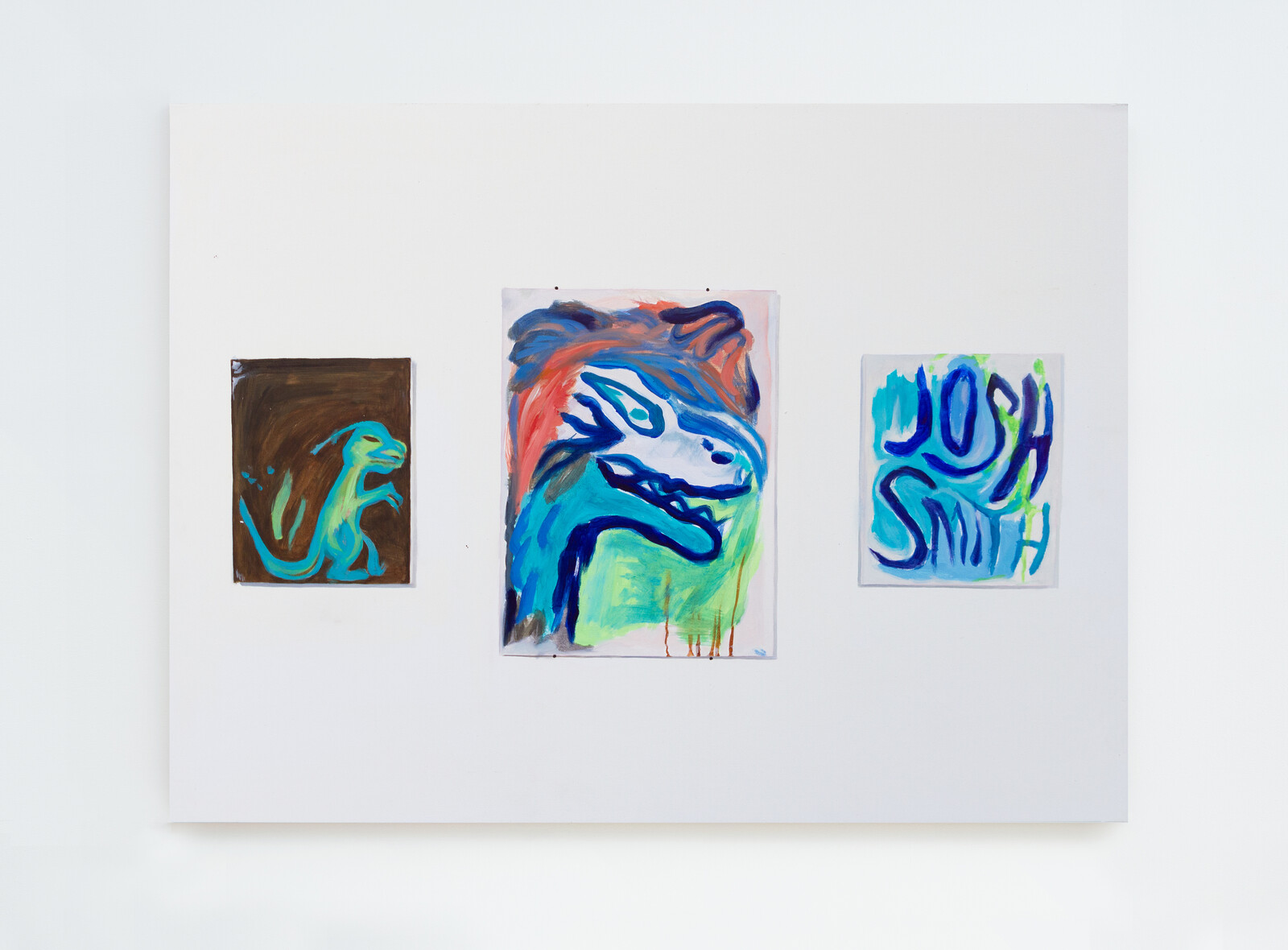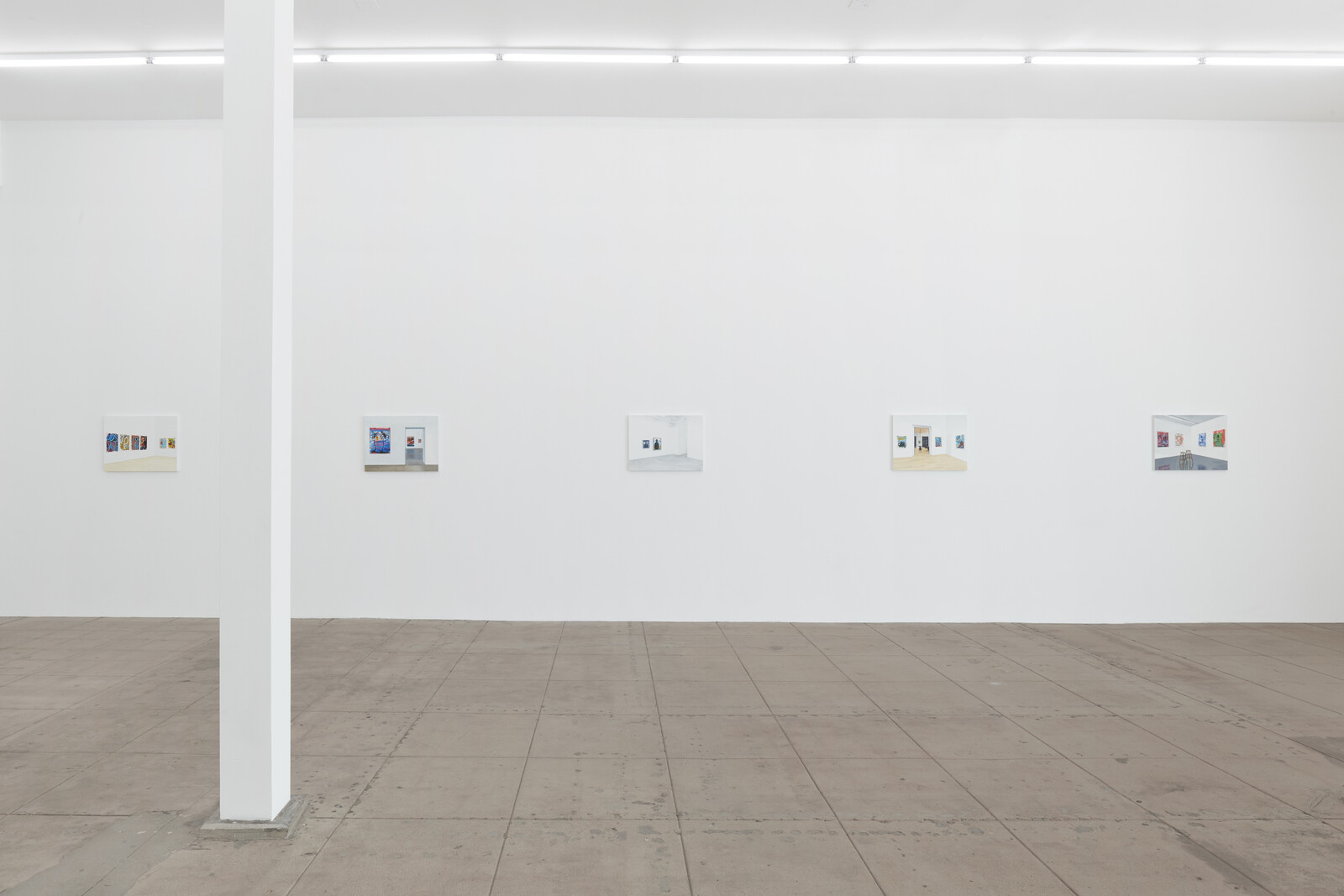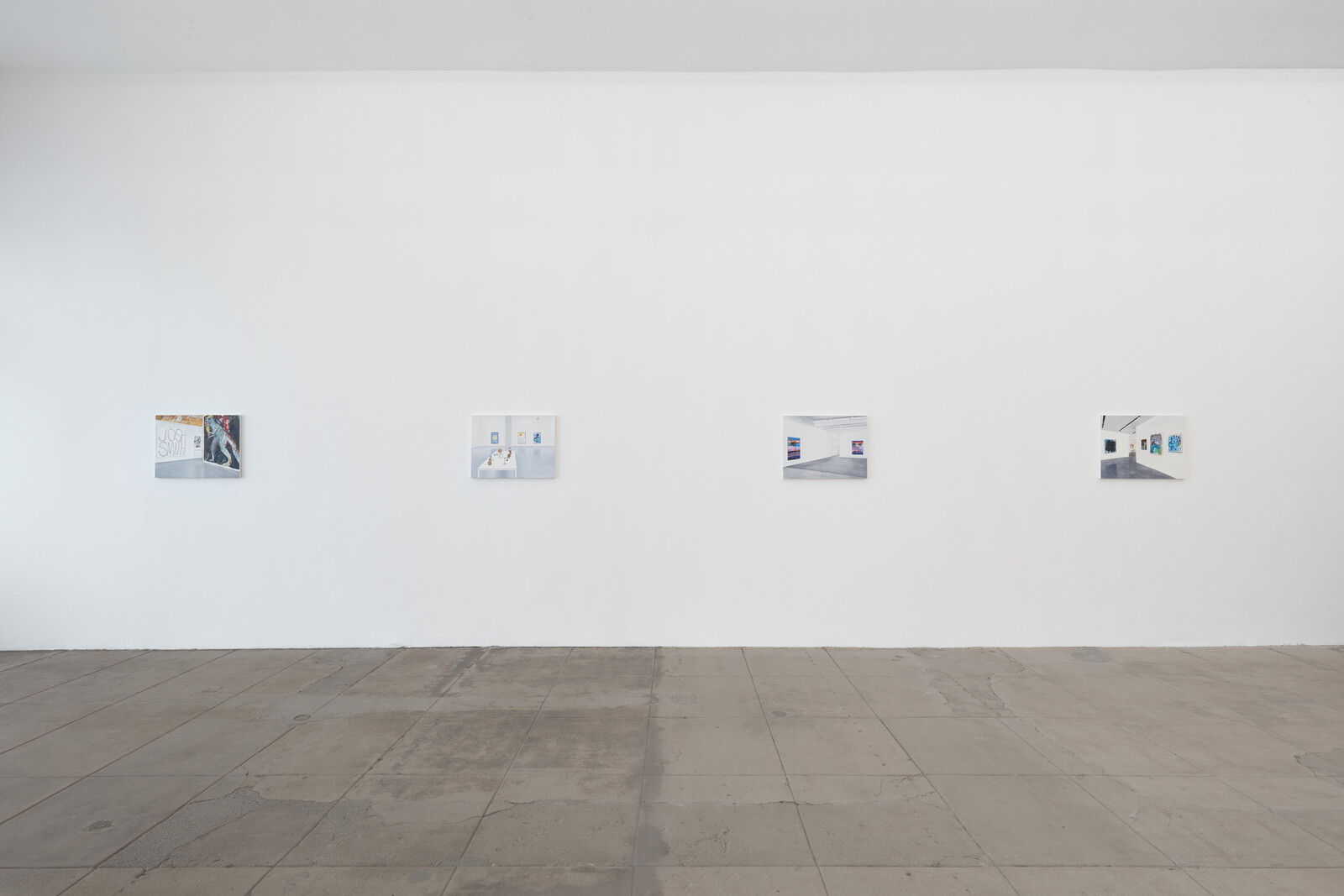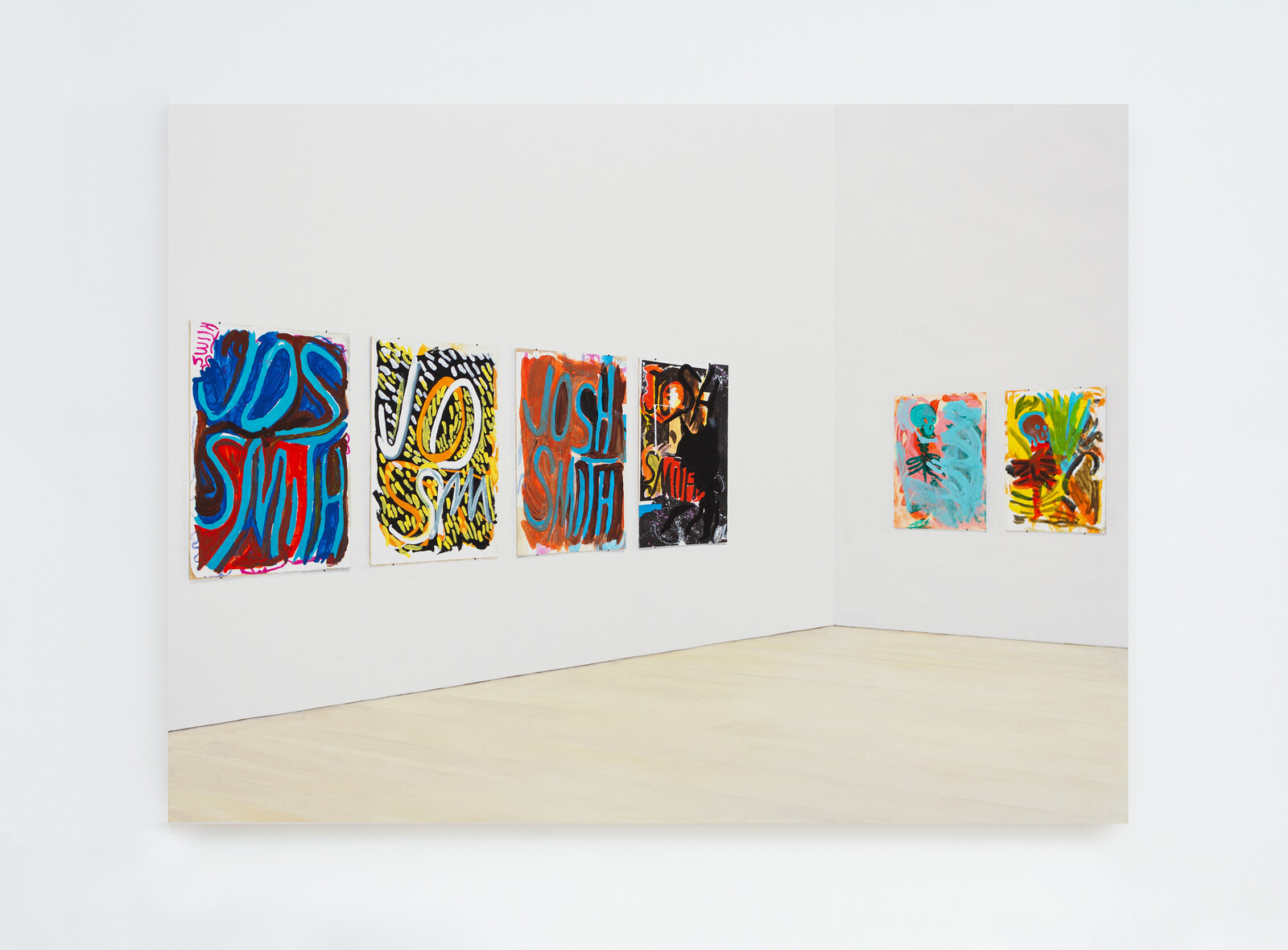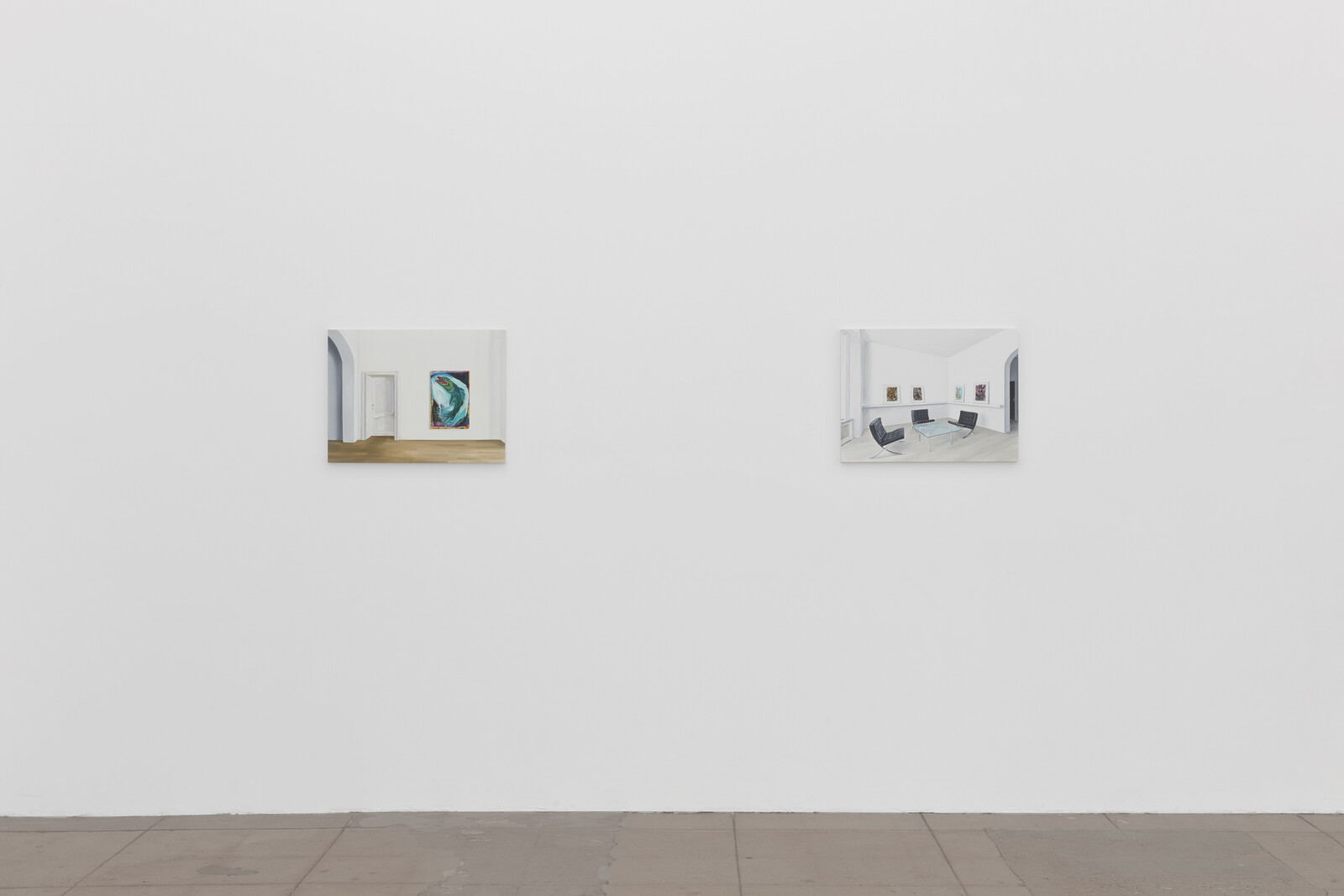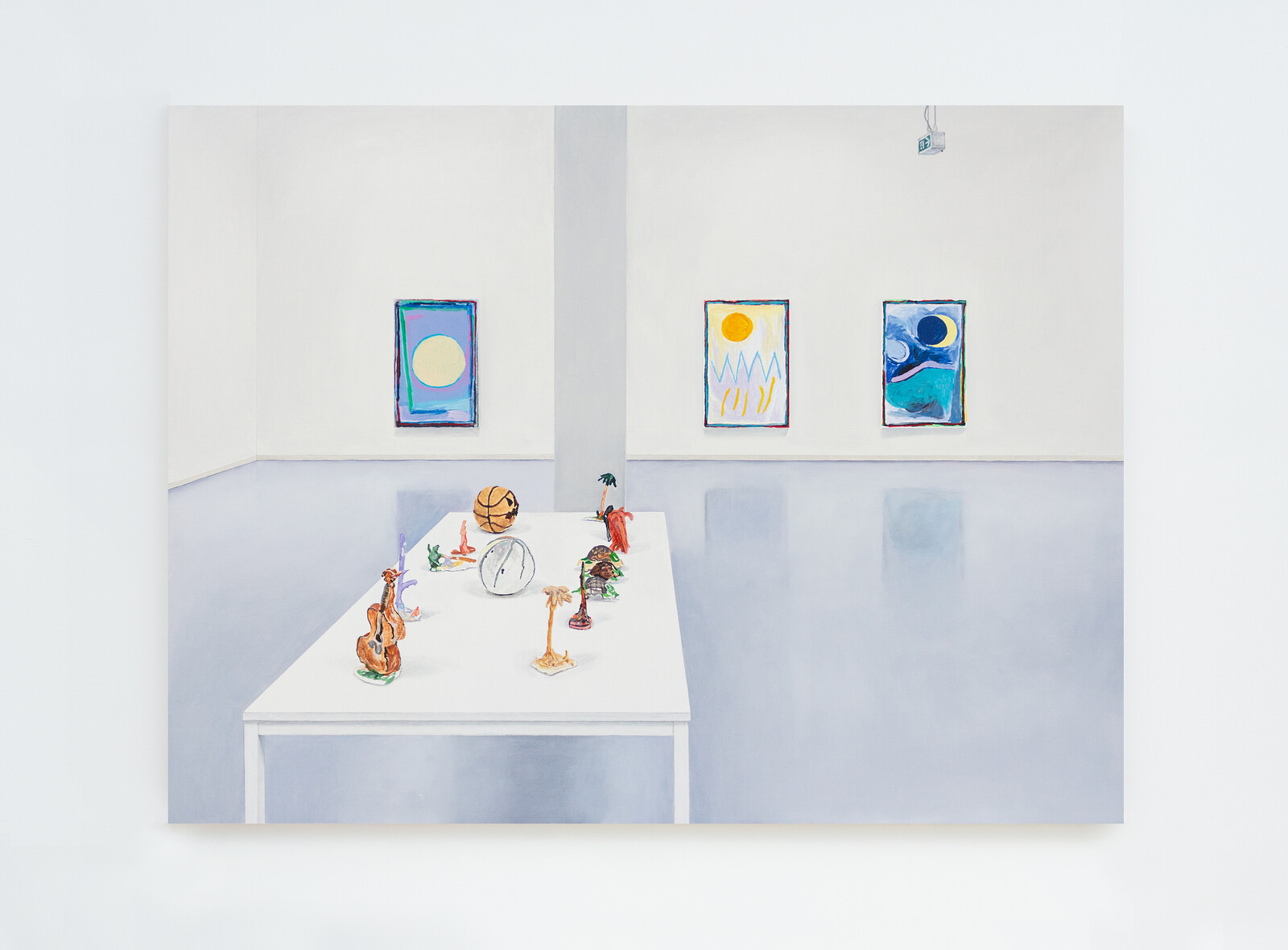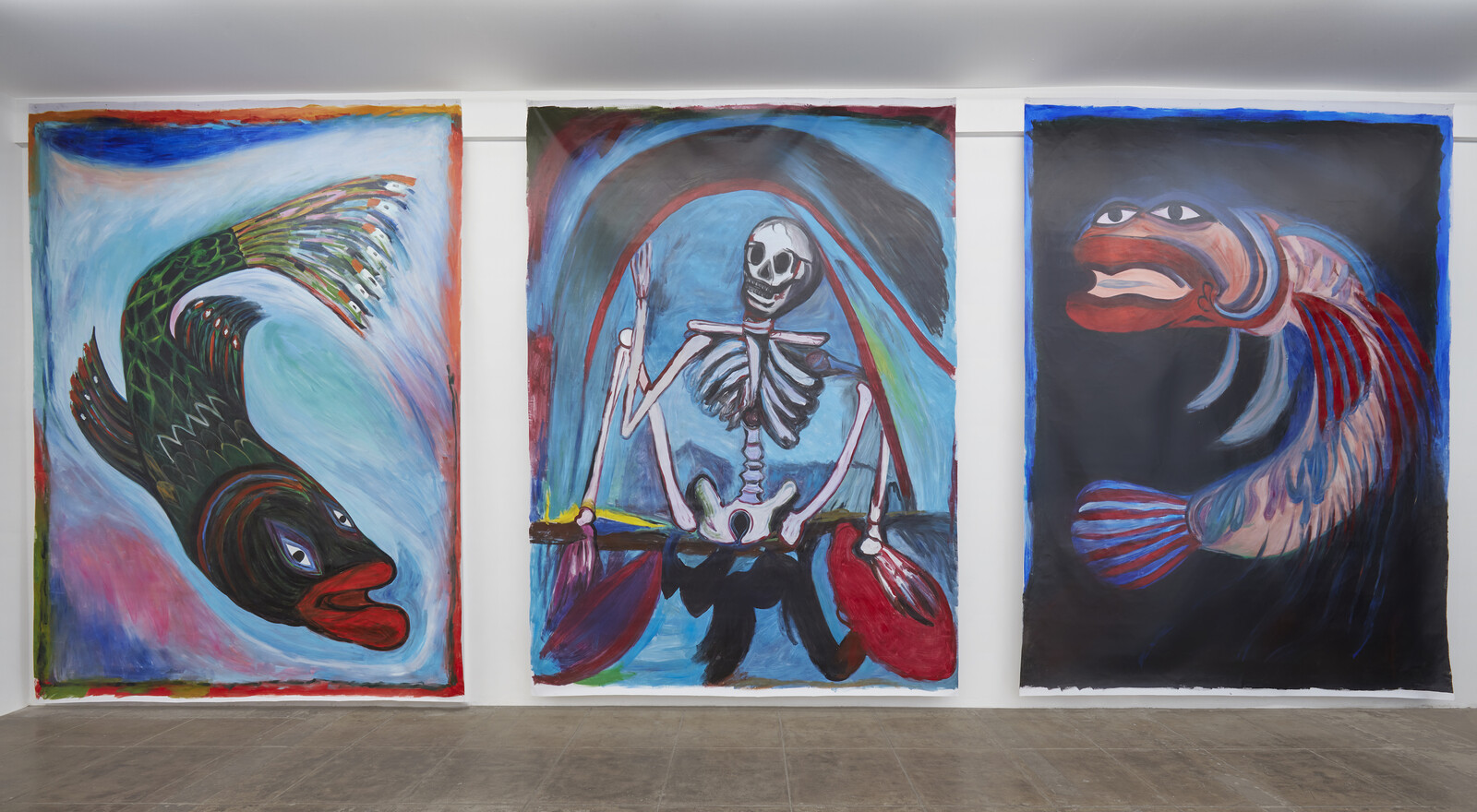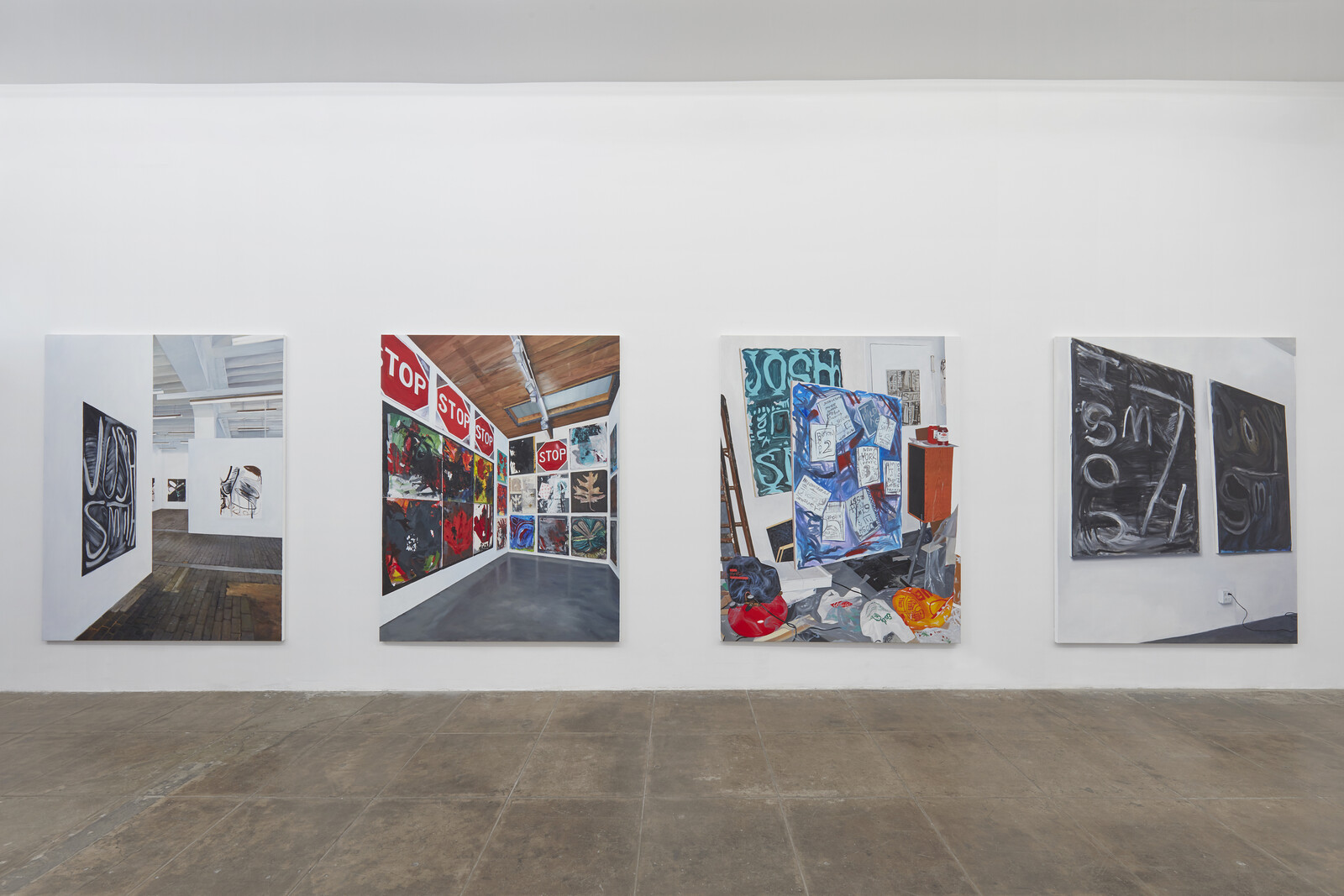When I took a fiction workshop in community college, the professor had a rather solemn habit of handing everyone’s manuscripts back to them with a gnomic phrase of critique or encouragement. He’d stop at your desk, plop the thing down, and say something like “you’re not delivering the goods” or “the text is incorruptible” and the rest of the class would blush or cringe in empathy. One day he lingered in front of Matt, uncharacteristically nonplussed, before gently handing over Matt’s paper. “I don’t know how else to say this,” he said, “but…lesser writers spend years trying to figure out how to write this badly.”
The rest of the class looked at one another, unsure of whether to laugh with Matt or at him, or ourselves.
Looking at Eliza Douglas’s work brings up all of this. Her paintings are awkward but somehow cool, deadpan but not cynical, unskilled but self-aware, surfeit with gall but not bravado. Douglas embodies an elusive up-to-the-second vibe, the je ne sais quoi of late-capitalist modernity, found also in the flat, sure-footed prose of Natasha Stagg, the low-register vocal fry of the girls of the Red Scare podcast. It’s a kind of affectlessness. (While writing this initial draft I misspelled modernity as “moodernity” and may have accidentally invented a new aesthetic category. If you combine the paralyzing self-awareness of a theory-damaged education with the metamodern performative impetus of being a woman online, you have something like Moodernity. In short: theory but make it fashion plus vibes but make it theory. And no smiling.) Douglas is best known for her hand paintings—outsourced photorealist depictions of the artist’s extremities finished with clothed limbs that peter off into abstract gestures (those parts she does herself). The concept is goofy and sweet but nearly overtaken by the amount of white space left on the canvas.
With Douglas I see a rip in the seams. Thrust into the limelight after studying painting for only four years, the artist cherry-picks and experiments, not from a range of painting techniques, but painter’s techniques—appropriation, outsourcing, poetic titles, no titles, being a bad painter, etc. I laugh with her. I blush with fremdschämen. I don’t know if any of this is correct, but as we say in comedy, I admire her commitment to the bit. I really do. I have to admit I didn’t know who Smith was when I entered this show, perhaps due to some as-yet-unrecognized apotropaic powers that block any figure labelled a “bad boy artist” from entering my purview. But it explains why the reveal of “Josh Smith” was that much funnier to me. Josh Smith is a David Zwirner–anointed painter who runs imagery you might find on children’s bedsheets—dinosaurs, skeletons, fish—through a dilapidated factory of Matisselike gestures. Also paintings of his name. “Josh Smith” is Douglas’s commitment to the bit, iterated over the course of 26 works (all Josh Smith, all 2019) that either copy Smith paintings outright on large unstretched canvases hanging like banners from the ceiling, or else depict scenes of various Smith works installed in various other Smith shows on genteel 18-by-24 inch canvases. Blick-sized. Perhaps one bad painter copying another, more famous and successful bad painter, isn’t good painting. But I like it as art.
“You think Josh Smith is a bad painter? I think he’s a great painter,” a fellow critic said to me. A beat. “But maybe that’s just because I like his books.” He added: “Have you read his books? They’re great.”
Disingenuousness is a position of letting on that you know less than you actually do. It’s a position that many painters opting for the provisional, cartoonish style take. There’s a lot of this in LA. There’s a lot of figures “quivering” between abstraction and figuration. There’s a lot of sensuousness. There’s a lot of historical references. Douglas has been pretty open about her inexperience and lack of skill as a painter, which might account for the hint of earnestness poking through all that deadpan white space of her canvases. Maybe. There’s no way for me to know what she knows and is choosing to reveal or not reveal. If critique measures the fidelity of the artist’s output to their intention, there’s something to be said for concealment. And in that way, the question of critique becomes not about skill, which it hasn’t been for quite some time, but it becomes about knowledge. The gallery couldn’t even confirm what portion or proportion of the works in “Josh Smith” were painted by Douglas herself, just that they were made in her studio with the aid of assistants. The joke has some themes of privacy folded in, perhaps even at my expense. As a fashion model (oh, you didn’t know?) Douglas takes on others’ visions as a day job, so it would make sense that even in her shyness as a painter—in interviews she often frames her conceptual moves as simply shortcuts, or efforts to make the painting look more “professional”—there’s something sharp and certainly professional about the studiousness of trying Smith on for size. Appropriation, like joking, works best when it punches up, so it’s nice to see giant Smith dinosaur paintings depicted in situ on Douglas’s small canvases—the bad boy painter literally taken down to size, looking all dainty and delectable like a Wayne Thiebaud petit four. Sturtevant spent her whole career appropriating the giants of great twentieth-century art, and it brought up all kinds of conceptual puzzles about the making of art, but also the making of an artist.
For better or worse, Matt took the professor’s note with an affectless grace. I hope he kept writing, and I hope Eliza keeps painting, all by herself.
